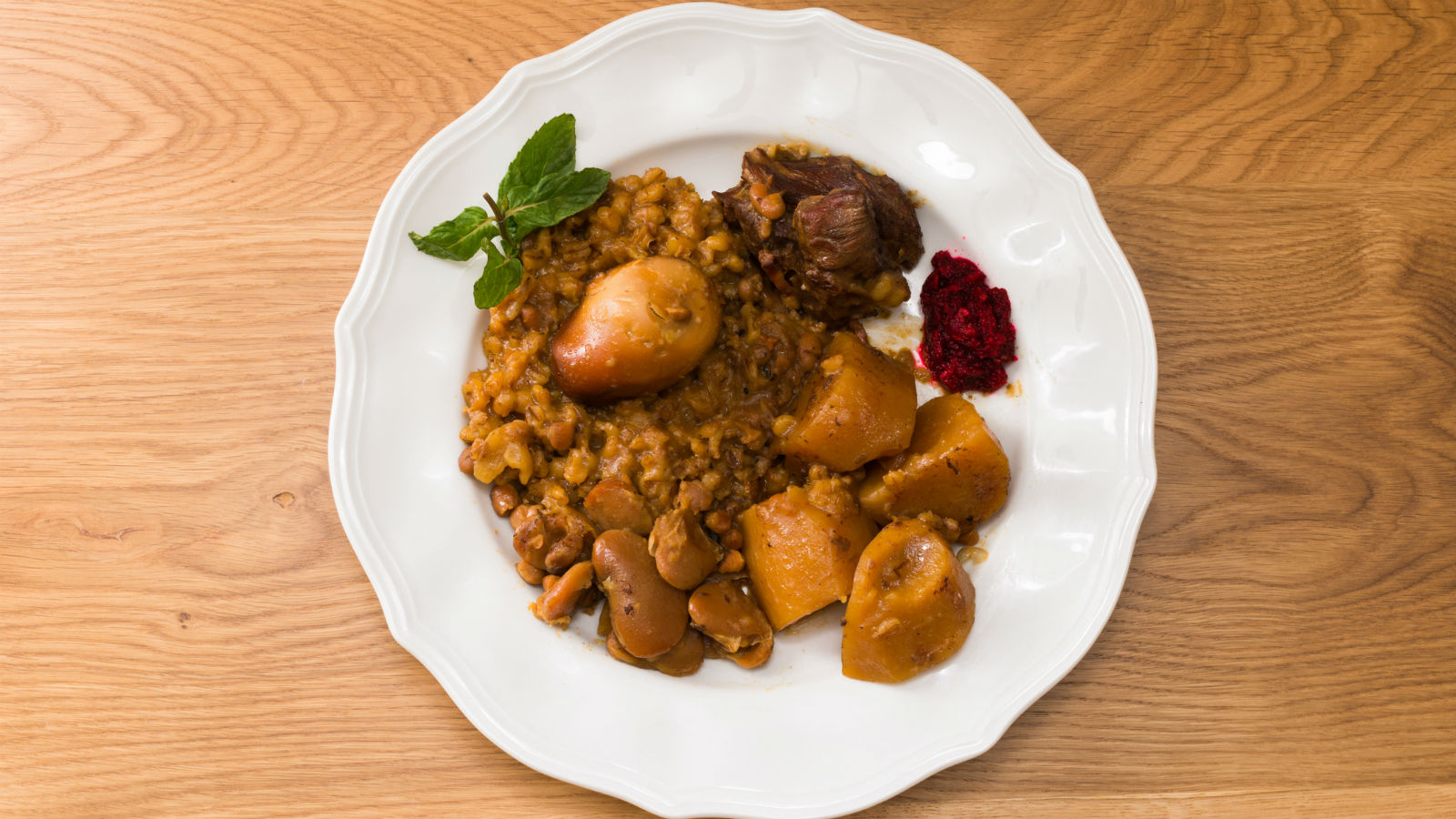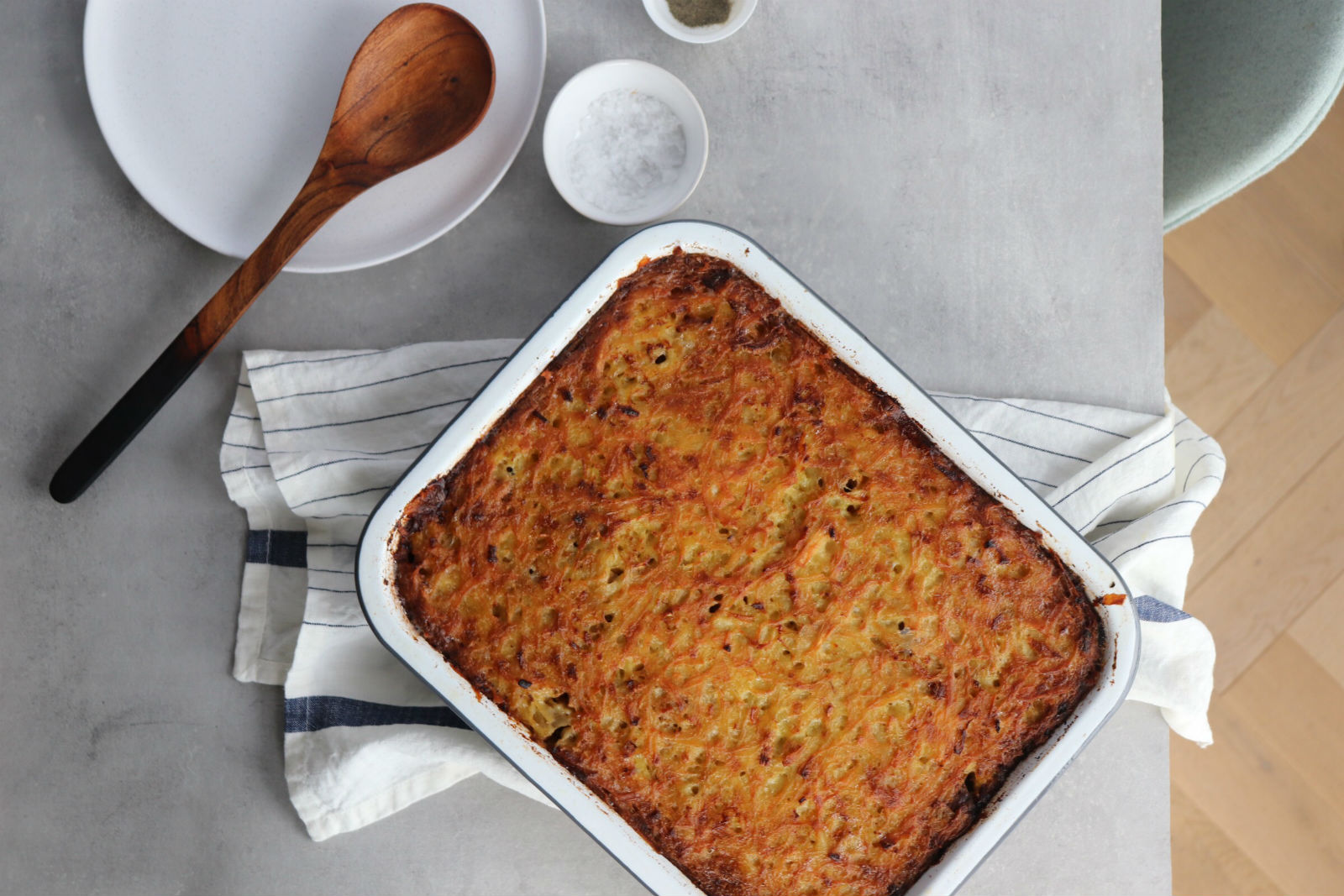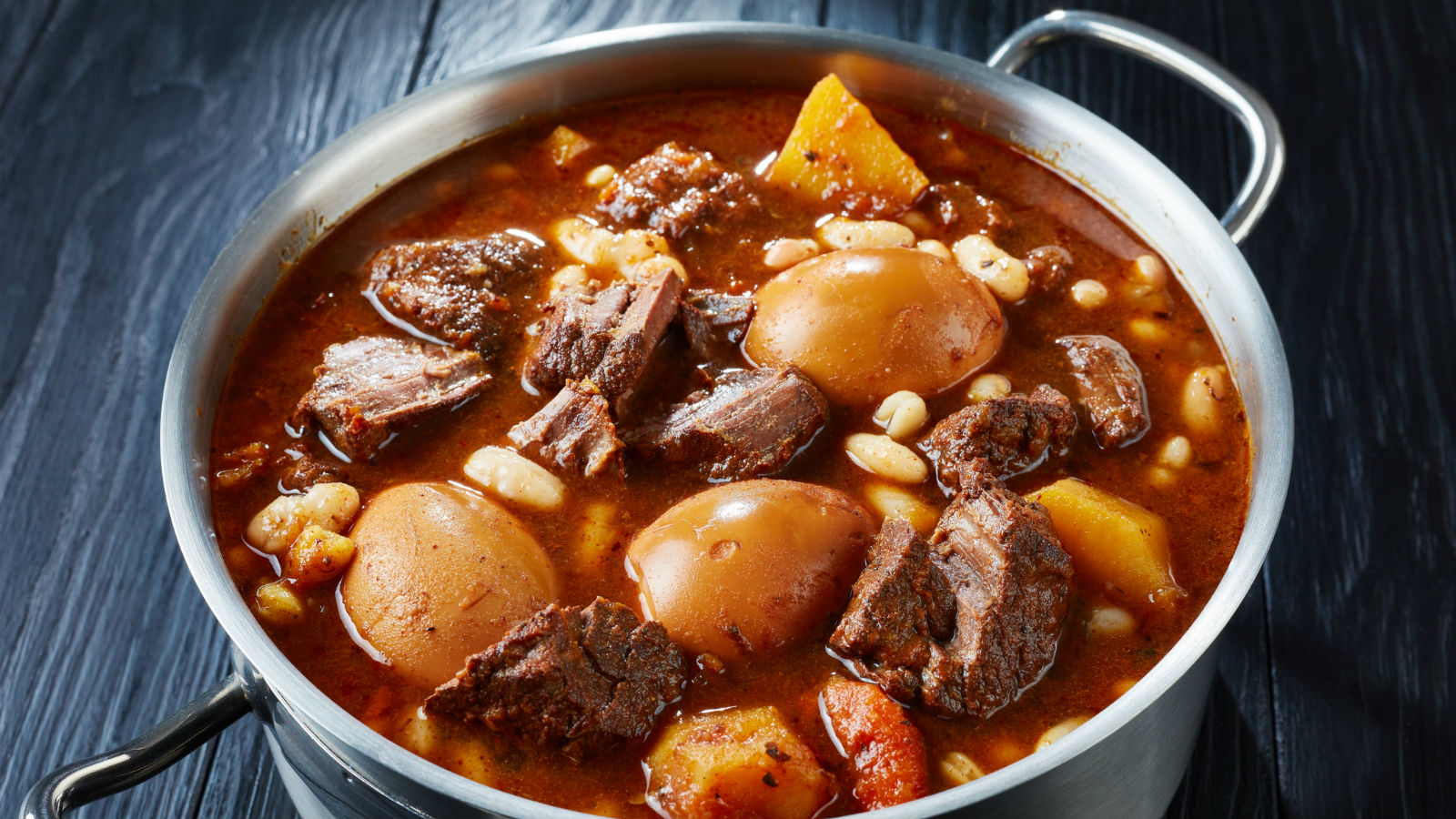I recently moved apartments and, in the lead up to the move, made an effort to use up everything in my pantry and freezer. In the former, I found a bag of dried navy beans huddled sadly behind some rejected Apple Jacks cereal; and in my freezer I discovered beef stew meat, marrow bones, and kishke. It seemed like the heavens were sending me a sign to make cholent.
The weather in New York was perfect for it: Cold with a threat of snow, it was a weekend made for staying in and eating a hearty stew in your pajamas.
Cholent is a dish intended for such resourcefulness; Eastern European Jews combined scraps of potatoes, barley, beans and meat into a stew, cooking it on a low heat overnight on Friday, to be eaten for lunch on Shabbat.

Although potatoes are my favorite food, cholent potatoes rank extremely low (roasted potatoes are, obviously, the winners). The slow cooking takes away their individual flavor, rendering them “stewy” in taste — what a waste! I often leave them out of my cholent, but because on this occasion I had no barley, something just felt lacking.
The Nosher celebrates the traditions and recipes that have brought Jews together for centuries. Donate today to keep The Nosher's stories and recipes accessible to all.
Then, half-hidden by a pack of frozen peas, I spotted a potato kugel. It had been hanging out in my freezer for a while, on account of the fact that it just wasn’t that nice. I’d bought a few of them, pre-made, from my butcher months before. My tiny Manhattan kitchen had no room for a food processor, and there was no way I was grating potatoes and onions by hand, so potato kugel had become a rare luxury.
I’d served the first kugel alongside a roast chicken and was severely disappointed by its dry texture and lack of flavor; I’d doctored the second by puncturing holes in it and sprinkling salt and oil on top, which only marginally improved it; and I’d left the final kugel in the freezer, unsure of what to do next.

I decided to put it in my cholent, hoping that it would be improved by sucking up the flavor and liquid of the stew, but not fall apart due to the slow cooking.
After seasoning the browned beef, sliced onions, beans, and marrow bones with paprika, honey, and salt and pepper, then filling the pot halfway with beef stock, I nestled the kugel on top. Alongside it, I added a couple of pieces of kishke and some whole eggs (borrowing from the Sephardic tradition of cooking eggs in a Shabbat stew). Then I left it to cook for 18 hours.
Reader, the result was beyond my wildest dreams! The eggs turned bronze and their flavor deepened; the kishke was soft and slightly crisp around the edges; the kugel — oh, the kugel! — remained whole but was wonderfully soft, moist, and had sucked up all the delicious meaty flavor. It kicked regular cholent potatoes’ butts.
Now, I wouldn’t recommend making your own potato kugel just for the purpose of sticking it in your cholent — a homemade “kug” is a thing of beauty and should be enjoyed as is. But if you find yourself in possession of a shop-bought, subpar kugel, add it to your cholent! It’s a true revelation.




